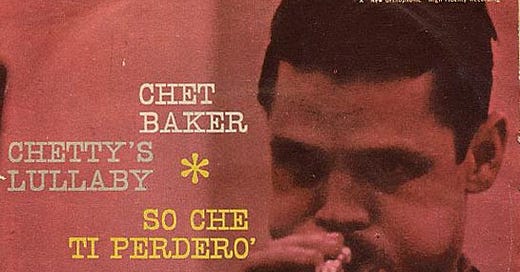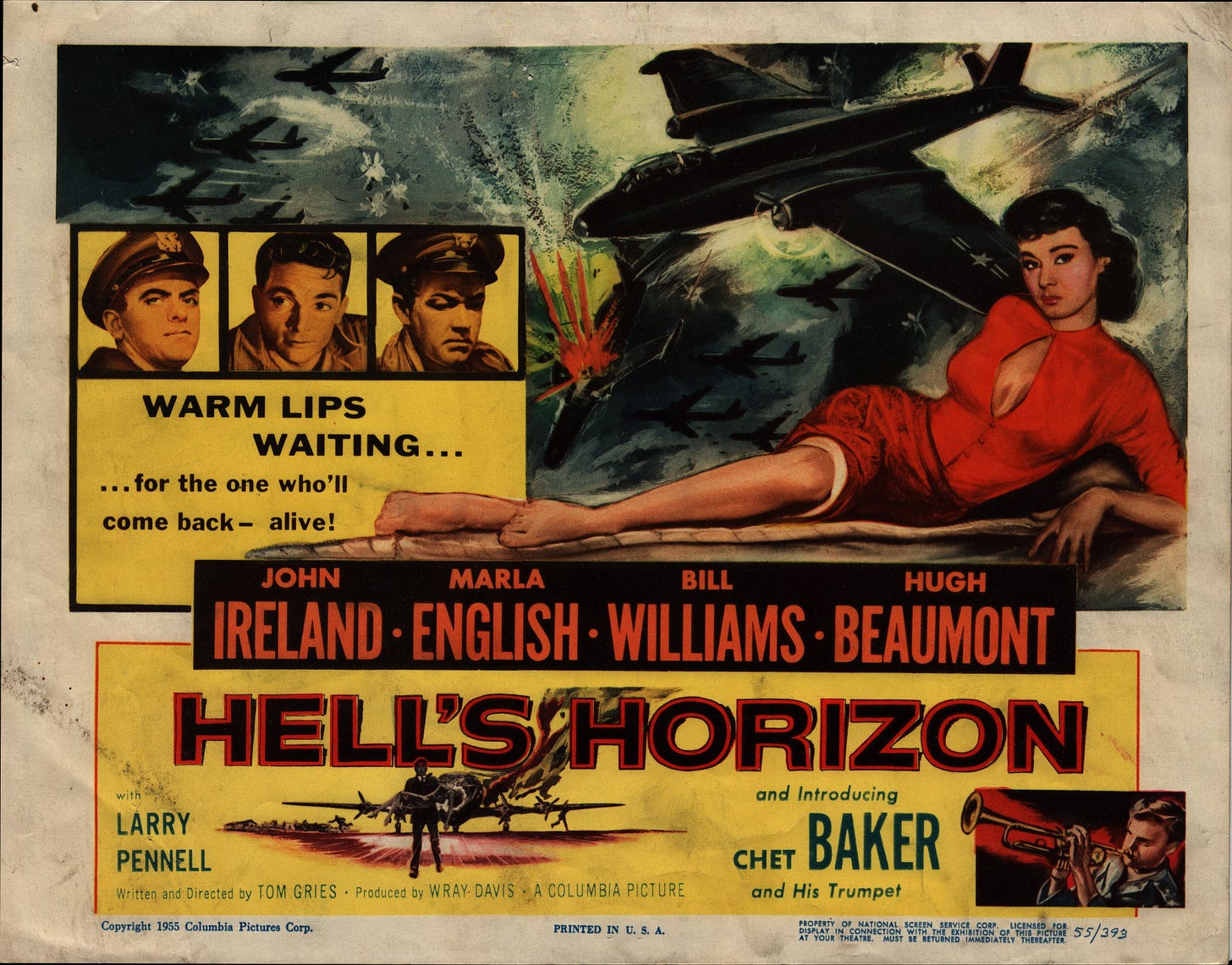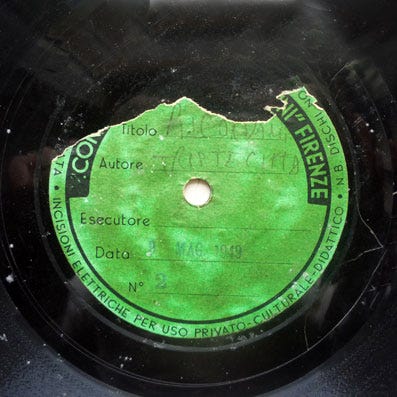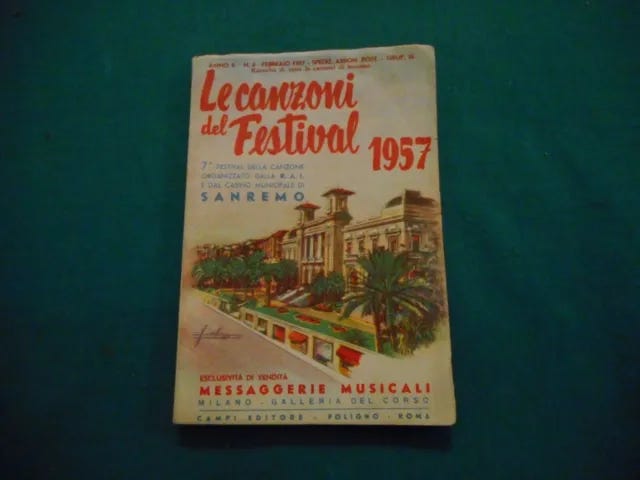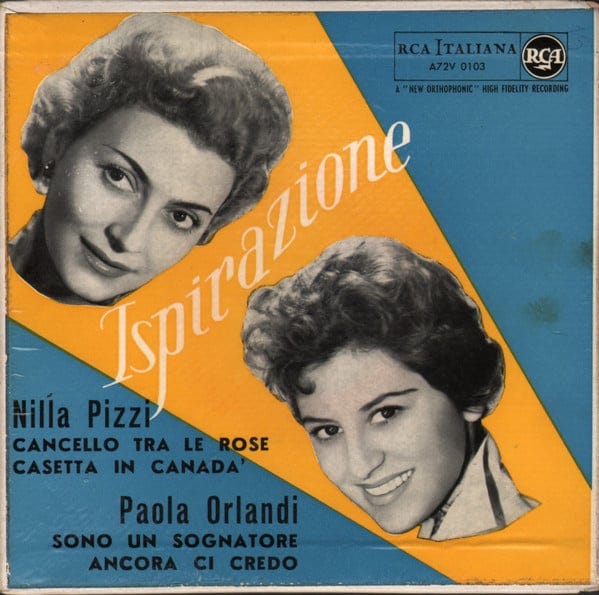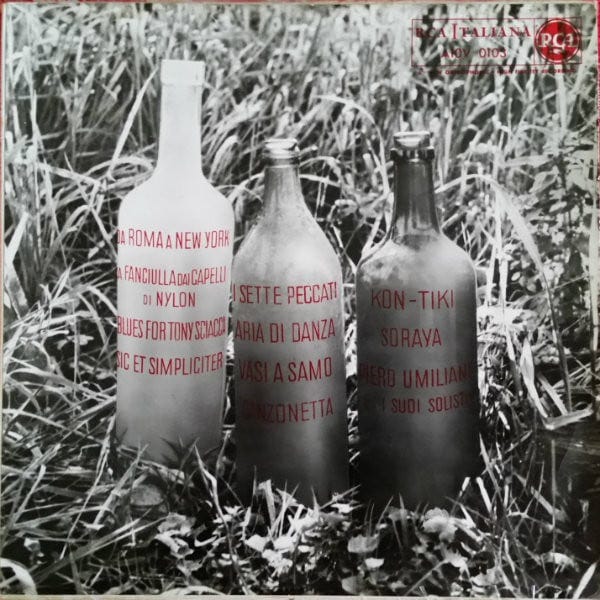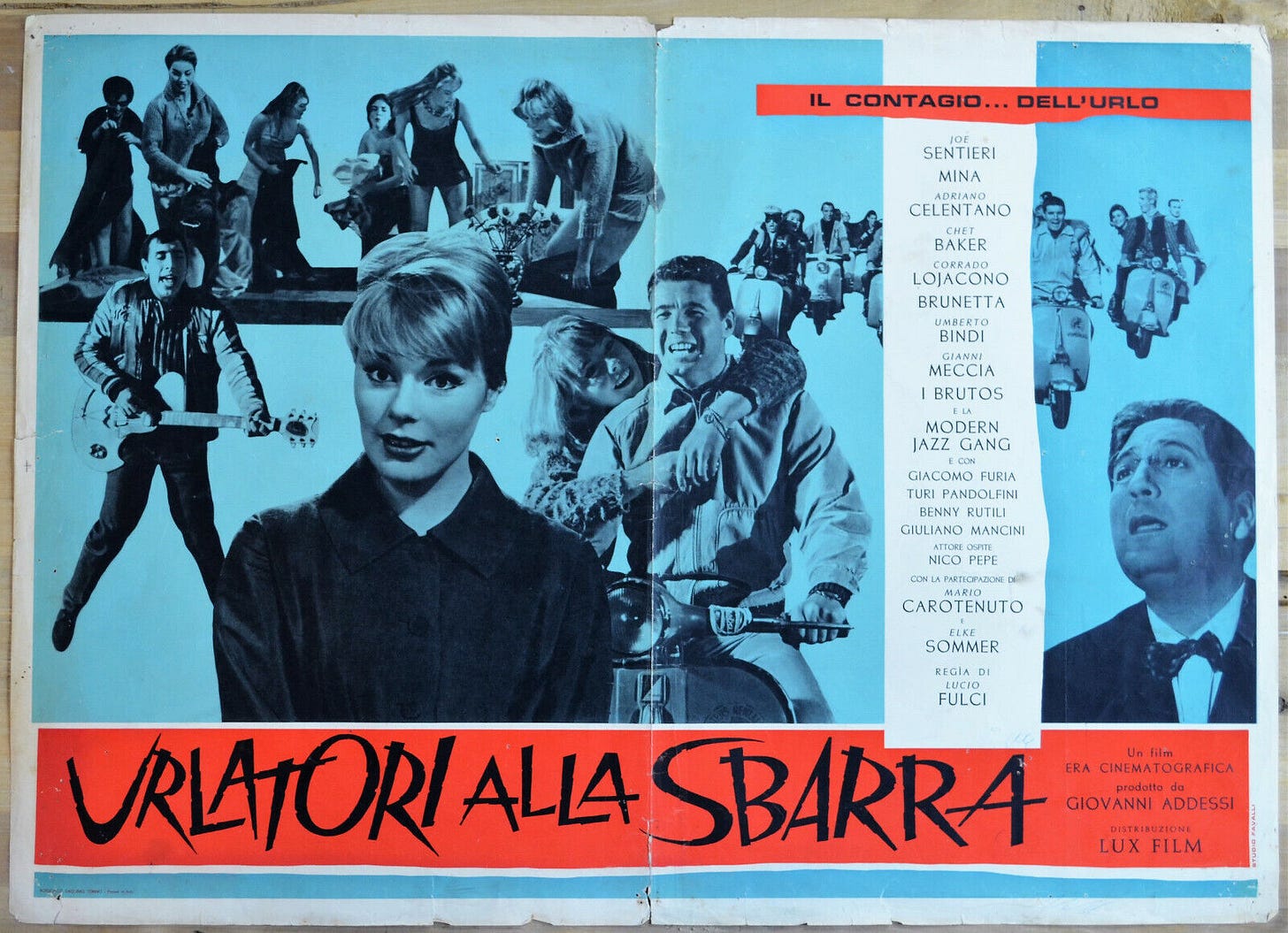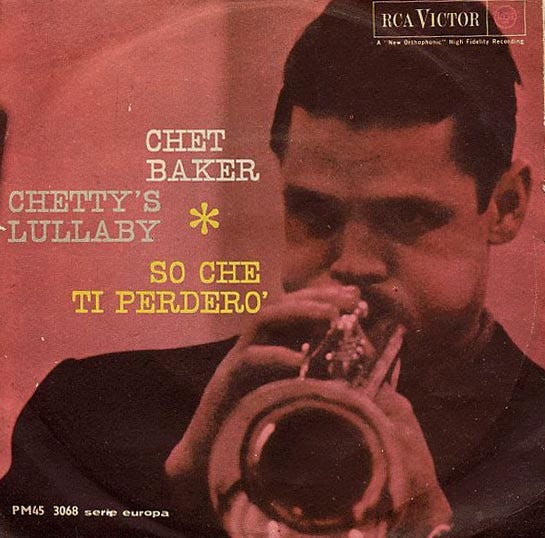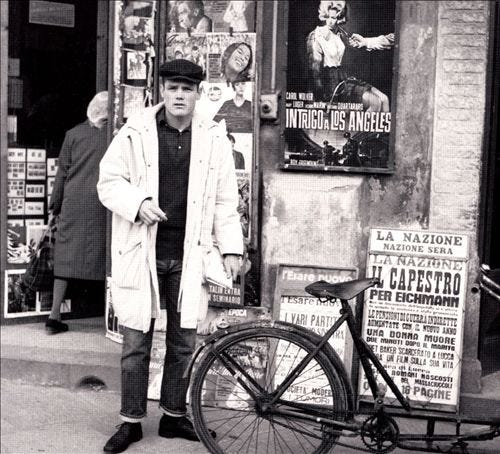In the world of Pop Music, a song is like a dish and the arrangement is like his sauce. I prepared a hot sauce but easy to digest.
- Piero Umiliani
The first time I heard Chet Baker sing and play the trumpet was while I was living in Monterey in 1985. I was watching the 1981 movie Sharky’s Machine on TV. The song was My Funny Valentine, which was featured throughout the movie and performed by different artists. But when I heard Chet Baker sing it, I took note. I remember thinking, “Who was that?”
I went to Tower Records and was lucky enough to find the soundtrack. There it was: My Funny Valentine by Chet Baker. From then on I was on the hunt for Chet Baker albums, and it was through him that I became interested in West Coast Jazz. My jazz journey began in New York, listening almost exclusively to all those heavy East Coast Jazz labels, but I took to the West Coast sound right away - it was cool, but hot.
After making the big time with Gerry Mulligan’s Quartet, in 1953 Chet Baker formed his own quartet. In 1954, Pacific Jazz Records released Chet Baker Sings, which included the My Funny Valentine version I heard on Sharky’s Machine. With stylish photographs by William Claxton and Baker’s cool demeanor, he became a jazz star and teen idol.
Hollywood saw movie star potential in Baker. He made his acting debut in the film Hell's Horizon, released in the fall of 1955.
However, he declined a studio contract, preferring life on the road as a musician.
In September 1955, Chet Baker, along with his quartet, made his first trip to Europe. It was the longest tour yet for an American jazzman. On January 1st, 1956, he traveled to Italy for a month-long whirlwind tour that also featured performances with Mussolini’s son - an excellent piano player. He’d return to Italy three years later for a much longer and precarious stay.
It’s hard for me to square that when he recorded Chet in December of 1958 and January of 1959, probably my favorite Chet Baker album, he was a hardcore junkie. By February 1959, he was busted for narcotics and sentenced to six months at Rikers Island. He was released two months early and given the standard Rikers “care package” - a bologna sandwich and a quarter for the subway. By the summer of 1959, he was on his way back to Europe, where he stayed for almost five years. The majority of his time was spent in Italy, where he was nicknamed “l’angelo“ (the angel) and “tombra d’oro” (golden trumpet).
However, before we get any further down that river, I think we should take ourselves back to Italy in the early 1950s, to a time before Jazz had fully entered the Italian cinema soundtrack world.
According to Piero Umiliani:
In the 1940’s I used to live in Florence. One day I saw a record in a little store. The title of the album was “Hot Duke” edited by Mills Music in New York City. In Italy nobody knew who Duke Ellington was and listening to that kind of music was prohibited, illegal, so if you were caught you could even end up in jail!
The war started and every time I played "Mood Indigo" on the piano I remember telling myself that it was the most beautiful piece ever written. Such a sweet melody, so different from anything else I had heard and played until then.
Finally, when American troops arrived in Florence they brought along their V-Discs (see my V-Disc journey) and 33RPM jazz albums. That’s how I discovered the rhythms and sounds of that music. This music became my life.
The relationship between Piero Umiliani and pop music in Italy began in 1949 when he recorded Triste Città, his first record on this private 78RPM label at the Luigi Cherubini Conservatory in Florence.
This is a nice tune, where he accompanies on the piano a Florentine singer. You can listen to this song here.
By 1951 he was recording Jazz tunes on the interesting Durium label. Here is Mam-Bop, the first example of Italian bebop:
However, at the Sanremo Music Festival, Umiliani started to make his mark.
The Sanremo Music Festival, officially Le canzoni del Festival, was the most popular Italian song contest and awards ceremony. At that time, it was held annually at the casino in Sanremo, Italy.
In 1957, his song Sono Un Sognatore became a hit when Paola Orlandi recorded it for RCA Italiana:
Paola Orlandi is the younger sister of Italian composer Nora Orlandi, who made a name for herself as the first female composer in the Italian cinema soundtrack scene - she composed her first soundtrack, Non Vogliamo Morie, in 1954 at the age of 21.
When I listen to Paola Orlandi singing Umiliani’s Sono Un Sognatore, I can imagine myself sipping Campari at an outdoor café in 1957 Milan:
This song also reminds me of Chet Baker. It just has that West Coast feel - no wonder the Italians welcomed him so thoroughly.
Incidentally, Paola Orlandi would go on to sing the classic Bond-inspired theme song for Bruno Nicolai’s 1966 Italian movie Upperseven:
As we covered two weeks ago, Piero Umiliani composed the score for Mario Monicelli’s I Soliti Ignoti - the first Italian soundtrack made entirely of Jazz numbers with top Italian jazz musicians.
Umiliani had been playing jazz in Italy as early as 1955 when he recorded Dixieland In Naples. In 1957, he recorded the even more popular Da Roma A New York. Both were released on the RCA Italiana label:
When Baker arrived in Italy in 1959, Umiliani contacted him to record some music, which would end up on I Soliti Ignoti’s 1959 sequel, Audace Colopo dei Soliti Ignoti. From that movie, here is Relaxin’ With Chet:
In 1960, Baker collaborated again with Umiliani on the soundtrack and played himself in Lucio Fulci’s film Urlatori alla Sbanna. You can see his name third from the top on this movie poster:
Unfortunately, while in Italy his drug use grew worse. Inevitably, in April 1961, Baker was convicted for forging Palfium prescriptions and smuggling large amounts of Jetrium in from Germany. He was sentenced to 16 months in a Lucca prison.
Baker was released from prison in December 1961. In Rome in January 1962, he recorded Chet Is Back. Hoping to make him a pop star, RCA Victor signed him to a one-year contract and asked him to cut four sides with Ennio Morricone, the famed conductor for Sergio Leone’s “Spaghetti Westerns”. Baker had written the songs while in prison and Alessandro Maffei provided the lyrics. They were released on two 45rpm EPs.
From one of those EPs, here is Chetty’s Lullaby, a tune he wrote for his son:
In 1962, Umiliani and Baker teamed up again on the terrific soundtrack for the film Smog:
From the album, here is Thinkin’ Blues:
The final Umiliani soundtrack that Baker worked on was Romano Ferrara’s 1964 Intrigo a Los Angeles. Here’s Baker in front of the movie poster:
Baker remained in Italy until early 1964 before returning to the States - in many ways, a broken man.
Here’s one more for the road. There’s no better way to close out this leg of our journey than to watch Chet Baker sing Arrivederci from the movie Urlatori alla Sbarra:
It’s spring, so next week on that Big River called Jazz we’ll return to the States and dig our paddles into the waters of Kansas City baseball and jazz.
Please hit this link to buy me a cup of coffee, if you’d like to show your guide some appreciation for this and past journeys. Know in advance that I thank you for your kindness and support.
If you like what you’ve been reading and hearing so far on our journey and would like to share this with someone you think might be interested in learning more about our great American art form: Jazz, just hit the “Share” button.
From Astaire to Sun Ra: A Jazz Journey is a reader-supported publication. If you feel so inclined, subscribe to my journey by hitting the “Subscribe now” button.
Also, find my playlist on Spotify: From Fred Astaire to Sun Ra.
Feel free to contact me at any time to talk shop. I welcome and encourage that.
Until then, keep on walking….

